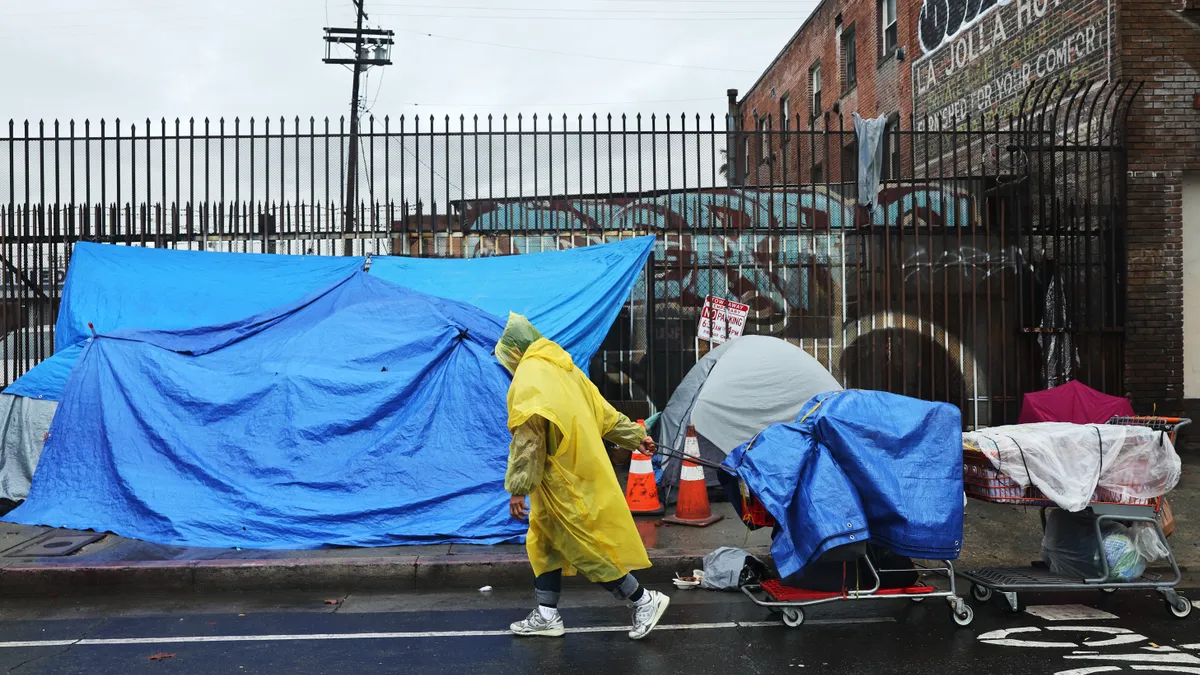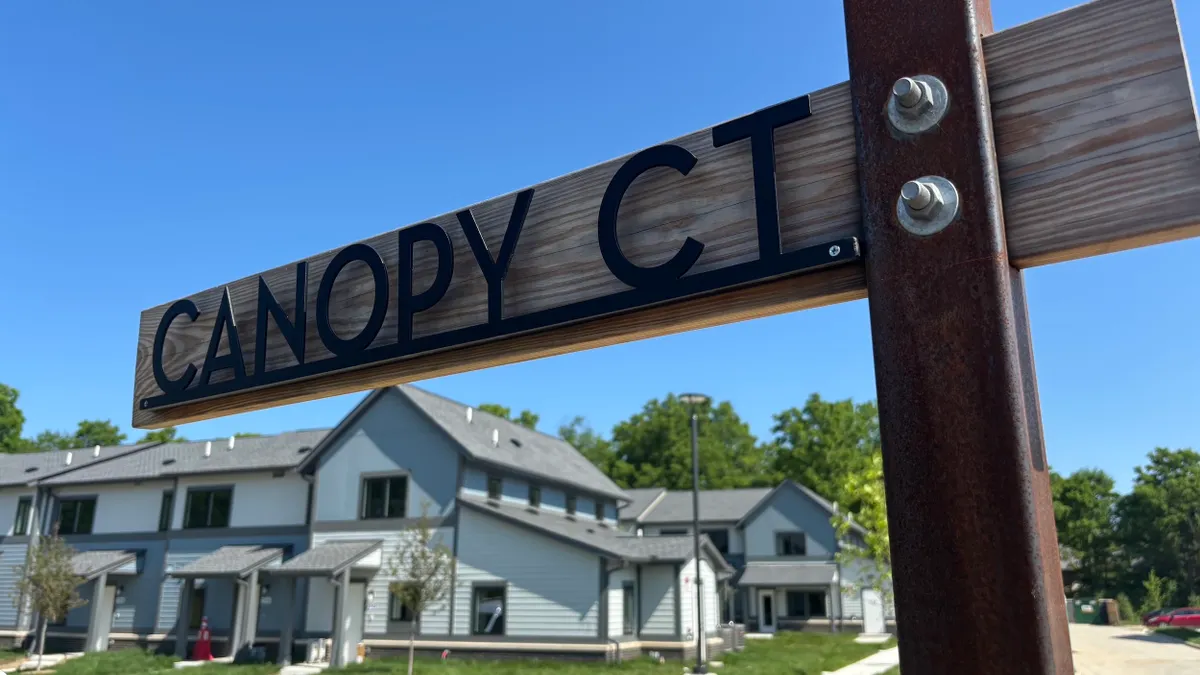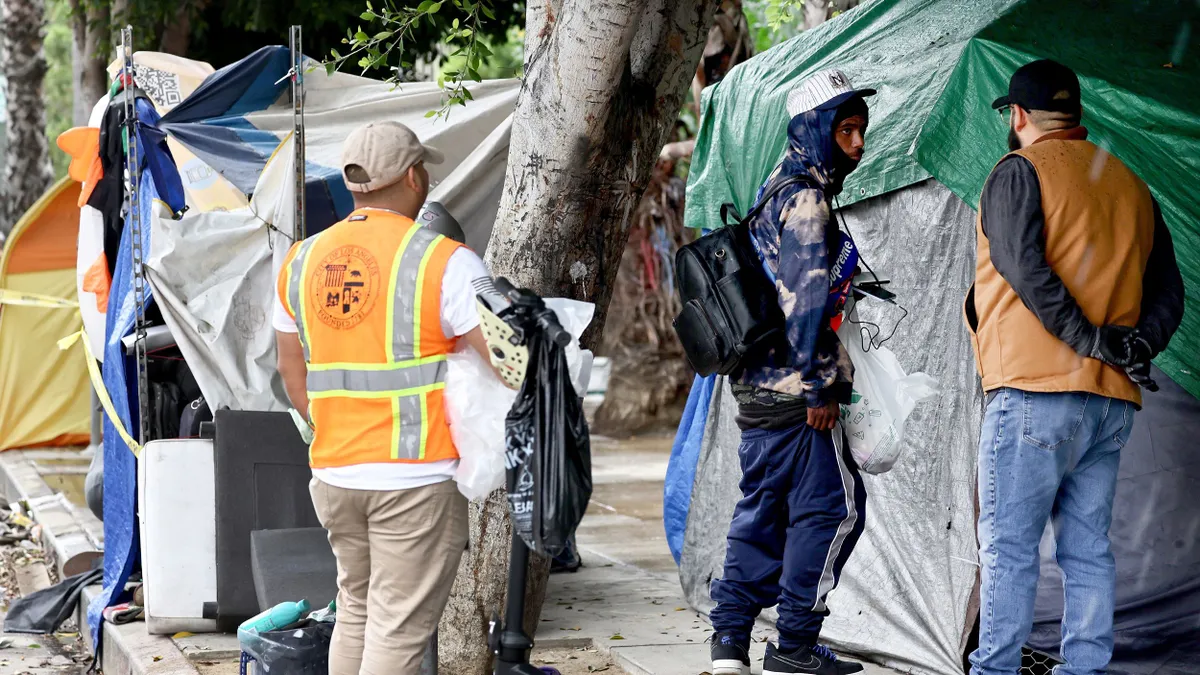To curb chronic homelessness and support people who are often shut out of the rental market, Los Angeles is pursuing an established strategy with a new twist: master leasing.
In February, the LA City Council unanimously approved a plan to pursue a master leasing program. With this approach, a “master leaser” – the government in LA’s case, but often a local nonprofit – rents a block of units, or even an entire building, from a private landlord and subleases them to tenants who might otherwise struggle to qualify for a rental unit due to a history of legal or financial issues, homelessness, mental health problems or substance abuse. The goal is to get people off the streets quickly – and for good.
“There are absolutely no barriers,” said Kris Freed, a consultant who helped draft the policy and the former chief program officer for LA Family Housing, a major provider of housing and homeless services in LA. “You literally can move someone from street to home, same day.”
With an estimated 75,518 people experiencing homelessness on any given night in LA County in 2023 — a 9% jump year over year — local officials are under pressure to address the problem. LA Mayor Karen Bass declared a state of emergency over the city’s homelessness crisis on her first day in office in 2022, rolling out the “Inside Safe Initiative” to prioritize moving people from encampments into temporary shelters and then transitioning them into permanent housing. But the program has faced bureaucratic hurdles that have slowed the process of moving people from interim to permanent housing.
“A place like LA, which has thrown billions and billions of dollars at addressing chronic homelessness, has a real high-stakes situation,” said Jason Ward, an economist and co-director of the RAND Center on Housing and Homelessness. “We need to be getting things right.”
To move ahead on master leasing, the LA City Council directed city staff to prepare contract terms, program metrics, options for funding sources and other details by late April. The master leasing strategy would begin as a pilot in the Fifth City Council District, and it follows a similar program launched by LA County in November 2023. The county’s initiative has already filled more than 100 units, and hundreds more master-leased rentals are in the works, according to Freed, who said all of the units made available so far have been filled within one or two days.
Freed explained that the draw of master leasing is that it doesn’t require new construction to house people, meaning they can move in quickly. It also enables the government to negotiate a below-market rate for the units, limit the year-over-year rent increases and ensure residents can use federal housing vouchers effectively, she said. The hope is that the city and county involvement will eventually end, and leases will transfer directly to tenants via a property management company, Freed said.
“While we're not able to totally turn back the market and say, ‘Let's go to pre-pandemic prices,’ … what we have been able to do is at least stabilize the rents within the buildings that we do have control of, and make it more affordable for the people that are moving in,” Freed said.
Master leasing isn’t a new concept, with nonprofits in Portland, Oregon, Luzerne County, Pennsylvania and Dallas — where the provider received $3 million in city funding in 2023 — taking up the approach in recent years.
“The only reason I think it doesn't happen more is because many cities don't have a funding source,” said Randy Shaw, executive director of the Tenderloin Housing Clinic, a San Francisco nonprofit that has been running a master leasing program since 1999. The THC now leases out units in more than 20 hotel properties in the city, all of which have case management and support groups on site.
The LA initiative differs from projects in San Francisco and elsewhere in two key ways, Freed said. First, the Los Angeles Homeless Services Authority, a joint county-city entity, will back the leases rather than turning them over to a nonprofit, she said, meaning that while external partners will manage the wrap-around services offered to residents, the government will be on the hook for payment, legal liability and security, and the building owners will handle major repairs and renovations. Secondly, people will be offered rooms in shared apartments rather than single-occupancy rooms, like in a hotel, Freed said.
Shared housing can help keep costs down, Freed said, given two- or three-bedroom apartments should be more affordable per person than the relatively rarer studios and one-bedrooms. That approach does come with tradeoffs, however. Shaw warned that shared apartments could raise the government’s legal risk if, for example, roommates were to have an altercation.
Ward noted that “large municipal governments aren't necessarily skilled at being efficient landlords,” pointing to potential waste if the units aren’t filled quickly enough. Master leasing initiatives could also end up squeezing the rental market if the government takes over buildings without encouraging many more rental homes to be built, since “homelessness is ultimately a huge symptom of a housing affordability crisis,” Ward said.
Ward said it’s unclear how effective master leasing programs have been over time, due to a lack of data. Local authorities should track whether people who rent these units stay there long-term, he said, and should try to ensure that new residents are put in a unit that is a good fit for them. For example, people with greater support needs or those who have been living on the streets for years may struggle to adapt without additional resources.
As hundreds more housing units become available through LA County’s program in the coming months, Freed is confident that the results will make the case for master leasing on a broader scale. For now, the county’s program is operating on a first-come, first-serve basis within designated neighborhoods, with the goal of having half of new residents come directly from encampments and the other half from shelters or navigation services, Freed said.
“California, as a whole, holds one-third of the [nation’s] homeless population, and a significant portion of that number are right here in Los Angeles,” Freed said. “If we can figure out how to do this, there's no reason that smaller jurisdictions can't figure this out.”


















